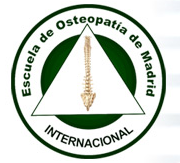Clues to stillbirths may be found in marmoset monkeys
The marmoset monkey may offer clues to reducing stillbirths in human mothers, according to new research at the University of Illinois at Chicago College of Nursing.
The prenatal environment that a female marmoset fetus develops in seems to affect her later reproductive success as an adult, says Julienne Rutherford, assistant professor of women, children and family health science at UIC and lead author of a study inPLOS ONE.
The marmoset, a squirrel-sized monkey indigenous to South America, reaches sexual maturity by 15 months of age. They have multiple births, usually twins and triplets. Adult females who were born into triplet litters get pregnant just as often as twin females, but they lose three times as many fetuses. Nearly half of the losses occur during labor and delivery, Rutherford said.
The new research looked at more than a decade of data on 1,395 animals of both sexes and all birth conditions at the Southwest National Primate Research Center in San Antonio. It has important implications for human stillbirth, which remains poorly understood, Rutherford said.
Current research on pregnancy loss focuses primarily on circumstances near the time of the loss, Rutherford said. "Things like the woman's current health and nutritional status, her race and income, and her lifestyle."
"Taken together, these factors explain a large portion of pregnancy loss, but not all," she said. "Our study suggests we need to consider a woman's entire life history, including her experience as a fetus herself, to solve the mystery of childbirth."
In marmosets, females who had a brother in the litter also lost more fetuses than those who shared the womb with sisters only, Rutherford said.
This unexplained "brother effect" on female fertility could be due to exposure to male hormones during fetal development, Rutherford said. What is clear, she said, is that adult reproductive function, specifically stillbirth, is shaped by events that occurred long before adulthood.
The study may suggest new ways to screen, diagnose and treat human reproductive dysfunction based on developmental milestones. There may also be "profound policy implications for the kinds of environments we as a society provide for babies, girls and women," Rutherford said.
Story Source:
The above story is based on materials provided by University of Illinois at Chicago. The original article was written by Sam Hostettler. Note: Materials may be edited for content and length.
Journal Reference:
- Julienne N. Rutherford, Victoria A. deMartelly, Donna G. Layne Colon, Corinna N. Ross, Suzette D. Tardif. Developmental Origins of Pregnancy Loss in the Adult Female Common Marmoset Monkey (Callithrix jacchus). PLoS ONE, 2014; 9 (5): e96845 DOI: 10.1371/journal.pone.0096845
SD










 Master PCMH Criteria with Upcoming Webinars
Master PCMH Criteria with Upcoming Webinars







 The American Osteopathic Association (AOA) is the representative organization for the over 70,000 osteopathic physicians (DOs) and 18,000 osteopathic medical students in the United States. The organization promotes public health, encourages scientific research, serves as the primary certifying body...
The American Osteopathic Association (AOA) is the representative organization for the over 70,000 osteopathic physicians (DOs) and 18,000 osteopathic medical students in the United States. The organization promotes public health, encourages scientific research, serves as the primary certifying body...










 9:03
9:03
 Daniel Enriquez de Guevara
Daniel Enriquez de Guevara













.jpg)


















0 comentarios:
Publicar un comentario